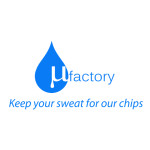How to Optimize the Formulations of Antiperspirants? by Microfactory
15 June 2021
The cosmetics sector is experiencing a real transformation towards cosmetics that are healthier for people and for the planet. On one hand, brands must convince consumers with products containing minimal amounts of ingredients coming from petrochemicals. On the other hand, consumers are becoming increasingly informed, through various means, about the health value of the products in their shopping cart. No product is spared from these changes in consumption habits, such as makeup and silicones, sun products and UV filters harmful to the ocean, or even the much-criticized antiperspirants and aluminum salts. Antiperspirants are regularly reformulated to adapt to consumer needs, evolving ingredients, or simply to comply.
“The formulation is undoubtedly the main step in designing cosmetic products. At the crossroads of market expectations and technical and regulatory issues, the products developed must meet the safety and performance requirements of our industry and embody the brand’s know-how.” (Extract from: “Conception des produits cosmétique : la formulation” by Anne-Marie Pensé-Lhéritier)
Problems encountered by antiperspirant manufacturers in developing their formulations
Aluminum salts such as aluminum hydrochloride (ACH) are the functional active ingredients in antiperspirants. To date, the French Agency for Sanitary Safety of Health Products (AFSSAPS) as well as the European Cosmetic and Perfumery Association (COLIPA) agree that there is no scientific basis for the claim according to which their use may be associated with any health risk. But the years of controversy around this ingredient have damaged the image of formulations that still contain it. As a result, many brands have increased their R&D efforts to continue to meet growing expectations for healthy composition, new marketing claims, and new regulatory requirements.
The development of an antiperspirant from its formulation to its marketing takes between 18 and 24 months. The final efficacy will be tested on volunteers (gravimetric evaluation) following strict protocols. Volunteers are selected, and then the product to be tested is placed on a single armpit. The volunteers are placed in a sauna with cotton pads under both arms in order to quantify the reduction in sweat between the treated armpit and the untreated armpit.
A large number of problems persist:
- This evaluation is carried out at the end of the product cycle
- The cost includes the number of volunteers, the protocols, and obtaining the safety certificate
- The time between the toxicology tests, the recruitment of the panelists, the carrying out of the test itself is 6-8 weeks
- The performance of the test is based on the average performance collected from volunteers, including the nature of individual response to the product, amount of sweat, pH, environment, etc. which gives results that are sometimes difficult to interpret
In improving the reliability of the results and reducing the evaluation time, Microfactory will shorten the development and marketing cycle of an antiperspirant by promoting the emergence of new ingredients that are healthy for humans and the environment.
Evaluate antiperspirant products in just one hour with predictive technologies
In order to assess the effectiveness of antiperspirants, Microfactory has developed an innovative duo: SOD4 and its Smart-Pore ™ consumable.
This rapid in vitro screening solution makes it possible to evaluate efficacy of the antiperspirant at the end of the formulation phase. This microfluidic technology accurately reproduces the sweating mechanism and thus creates the sweat/antiperspirant contact in a biomimetic manner. The information obtained is real-time visualization of the complex formed by sweat and antiperspirant, its formation dynamics, and the measurement of its resistance to sweat.
Thanks to Smart-Pore ™ & SOD4, all of the usually variable parameters like sweat, temperature, and humidity can be controlled. This technology makes it possible to differentiate each formulation from one another on the basis of objective performance, and to send the best of them to the CRO with peace of mind.
Smart-Pore ™ & SOD4 are inserted as the first link in your evaluation chain and intervene at the end of the formulation stage.
Smart-Pore ™ & SOD4 have already contributed to the development of around 100 antiperspirant products in two years.
In September 2020, a Spanish company called on the services of Microfactory. A comparative effectiveness study was carried out between one of their products already on the market and the new formula to be tested. This revealed that the new formulation was less effective than the old one. Microfactory helped the project manager in understanding the phenomena involved and advised on the optimization of its formulation. The following October, a new version of this formulation was evaluated and made it possible to validate a high performance formulation.
Thanks to Smart-Pore ™ & SOD4 technology, the Spanish company optimized its formulation in just a few days and brought its product to market in record time.
Time optimized for a better quality product
As you can see, it is now possible to achieve an advanced antiperspirant product in record time. Thanks to Smart-Pore ™ & SOD4, leverage optimized product development time with a formulation solution as an added bonus.
Published by Marilyn Rolfe on May 31, 2021
CONTACT
Marilyn ROLFE
https://www.linkedin.com/in/marilyn-rolfe-a73194104/
07.64.54.19.73








 Follow us on Linkedin!
Follow us on Linkedin!
You must be logged in to post a comment.